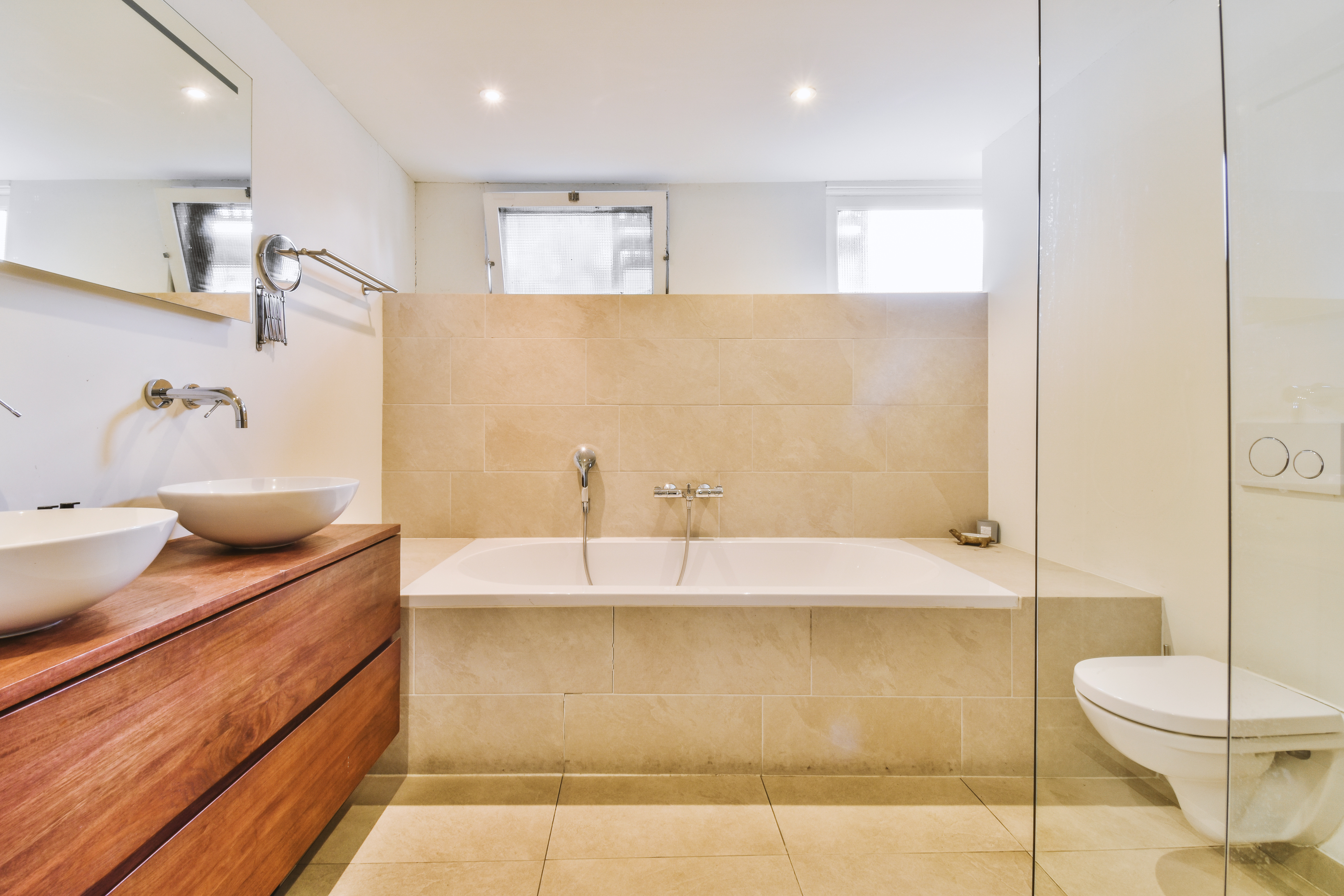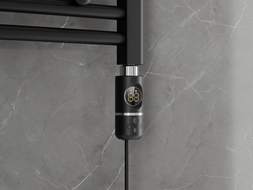
Do you have a bathtub in your bathroom and wonder what to do to make it look as aesthetic as possible? A bathtub that is built-in definitely looks the best – of course, we are talking about a case where it is standardly installed against the wall. Despite the increasing popularity of freestanding bathtubs, built-in bathtubs still reign supreme, primarily due to their practicality and ease of cleaning. Building a bathtub step by step - we present all possibilities!
Bathtub Construction - Where to Start?
The bathtub can be supplied together with it directly from the manufacturer, or you can create your own bathtub surround, perfectly tailored to your bathroom and our taste. The bathtub surround can be made from various materials and finishes:
-
from drywall sheets,
-
from aerated concrete blocks,
-
from panels,
-
from ceramic tiles,
-
from sanitary acrylic,
-
from wood.
As you can see, the surround of the bathtub in your bathroom can have various finishes - allowing you to perfectly fit it into the decor of the room! What’s more, a bathtub surround allows you to keep this area clean - there is no gap between the edge of the bathtub and the wall, which means water won’t trickle anywhere. Additionally, building a bathtub allows you to cover the entire installation - however, do not forget to leave an inspection hole to ensure access in case of any emergencies.
Ready-made Bathtub Surrounds
Many bathtub manufacturers offer ready-made surrounds that fit specific models - they have the appropriate shape and dimensions. The most commonly encountered ready-made surrounds are for rectangular bathtubs, which are the most popular model. A ready-made bathtub surround is a huge convenience since we are sure it will fit the bathtub well. Ready panels are usually made of smooth sanitary acrylic, which is very easy to clean - the main disadvantage of this solution is that they are usually white, thus not offering much scope for decorating our bathroom.
The main advantage of ready solutions is the ease and speed of installation - you don’t even need to hire a professional. Once such an acrylic panel is installed, the bathtub is fully ready for use. Another significant advantage of a ready surround is that in the event of a malfunction, we can quickly remove the panel and reinstall it after the repair. Check what solutions for bathtub surrounds we have in our store:
How to Build a Bathtub - Step by Step Preparation
When deciding to create a bathtub surround, we must start with preparing the substrate, regardless of the type of finish. To create a full bathtub surround from ceramic tiles or other material, we must create a surface where we will attach the finishing of the bathtub surround. We can use several different materials for this purpose.
Bathtub Surround from Gypsum Board
Gypsum board is one of the most popular solutions for creating the substructure for the bathtub surround finish. If we care about better soundproofing (e.g., living in an apartment), we can layer two sheets of this board. Green gypsum boards are designed for bathrooms - they are moisture-resistant. A bathtub surround based on a gypsum board structure works best for rectangular bathtubs.
Bathtub Surround from Aerated Concrete
Another material used to create the substructure for the bathtub finish is aerated concrete tiles - they usually measure 60 x 25 cm and have a thickness of 4 to 6 cm. Similar to gypsum board, this solution is best used for rectangular bathtubs - however, by cutting the tiles into narrower strips, we can use them to build an arch-type surround structure.
Bathtub Surround from Polystyrene or Flexible Panels
The most universal material used to create a bathtub surround substructure is polystyrene or flexible panels - they allow for the construction of oval, arch, and rectangular surrounds. Such panels can easily be adjusted to desired dimensions.
What to Use for Bathtub Surround - Types of Finishes
If we already have a substructure, we can choose the finish for the surround. For rectangular bathtubs, we most often choose ceramic tiles or wood, although ready-made synthetic panels are very popular and cheaper. This solution is among those "less premium" options which cannot compete with tiles, but by choosing such a surround, we select economical minimalism, which many people appreciate.
Bathtub Surround from Ceramic Tiles
The most popular option is to surround the bathtub with ceramic tiles. They are also used on the walls or floor of the bathroom: this material is moisture-resistant and very easy to maintain cleanliness. Ceramic tiles are now available in various designs and colors, allowing for a truly fantastic bathroom decor. If we finish our bathtub with ceramic tiles, we have a large scope of possibilities, as this material can be cut in any shape, which makes it suitable as a surround for oval bathtubs too. The tiles are glued to the surface with dedicated adhesive, and then we perform grouting - it is best to choose moisture-resistant materials here.
Bathtub Surround in Wood
Another, somewhat less popular option for finishing the surround is the choice of wood. Thanks to modern technologies, wood can be suitably protected against moisture - so there is no fear of it starting to rot. When choosing wood for the bathtub surround, we can opt for exotic species that thrive in humid environments. They contain a lot of natural resins that protect against the development of fungi and mold and do not require additional impregnation. Using wood in the bathroom creates a modern yet cozy effect.
Bathtub Surrounds: Summary
As you can see, building a bathtub in the bathroom is, contrary to appearances, a relatively simple process, especially if we choose ready-made solutions provided by the manufacturer. Dreaming of an interesting and unique space allows us to build the bathtub ourselves, selecting the finish that best fits the decor of our bathroom, and at the same time to the type of bathtub



















